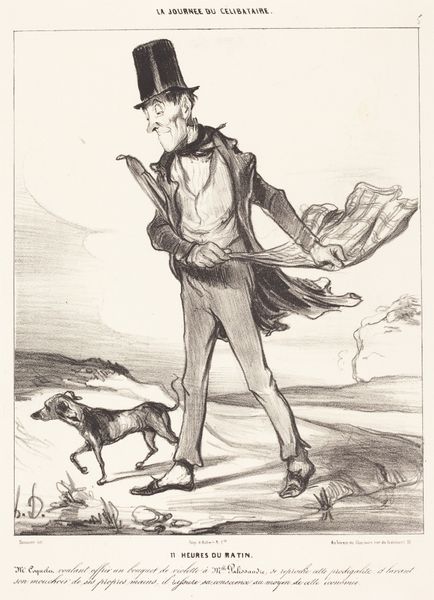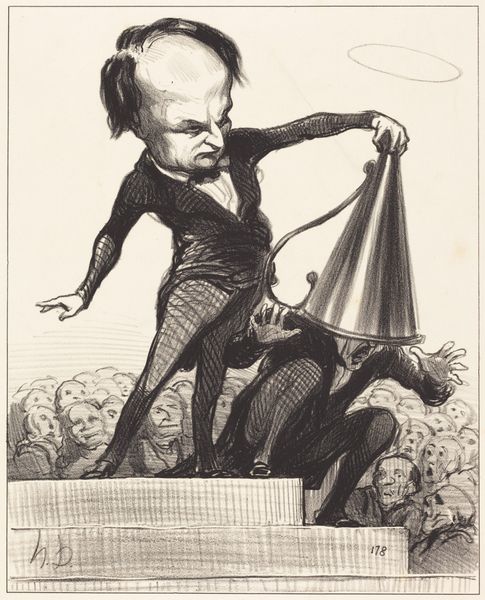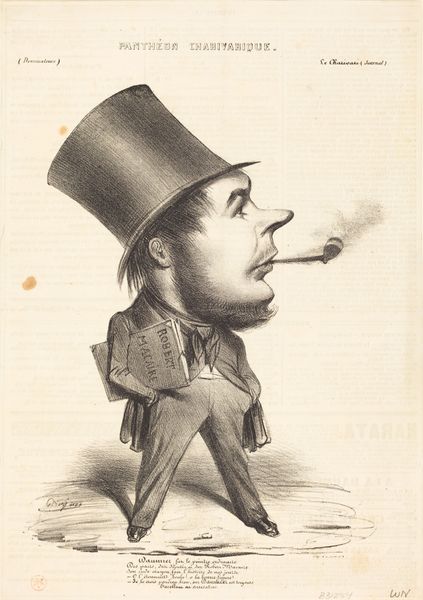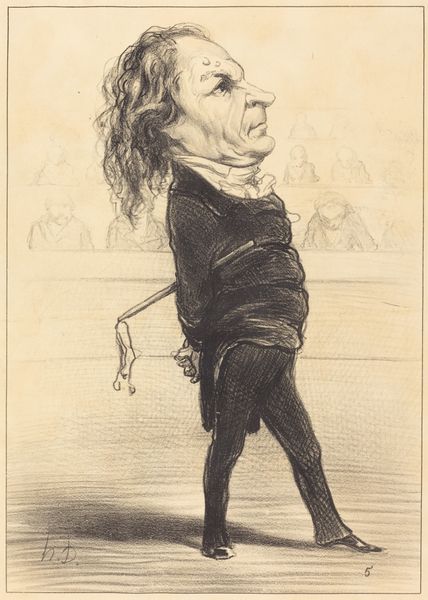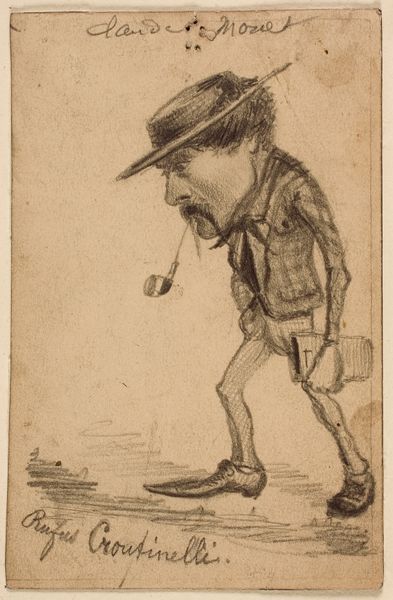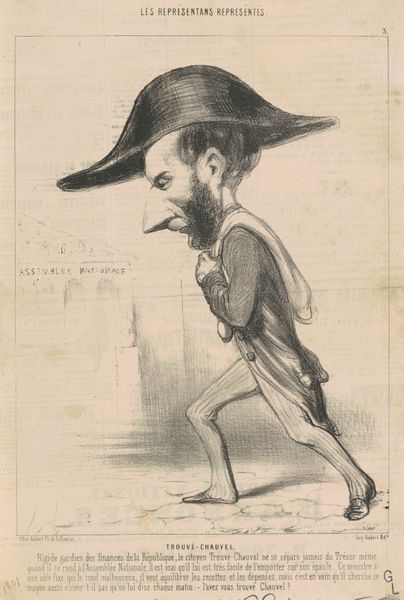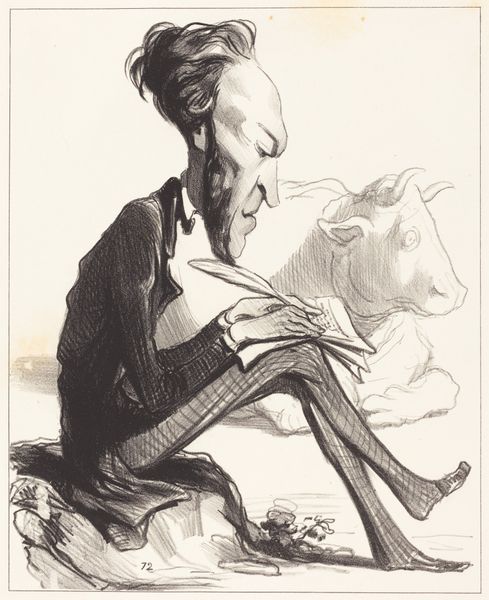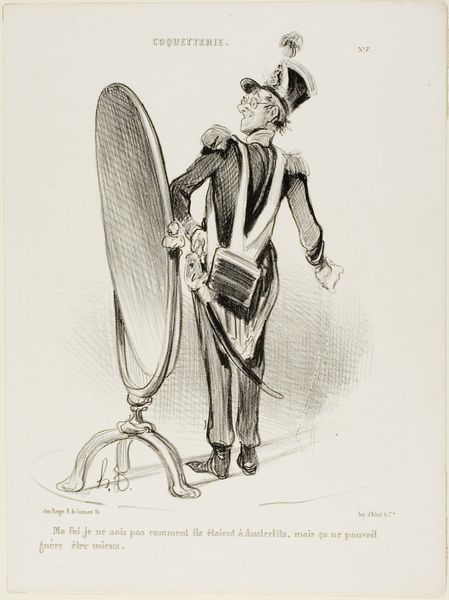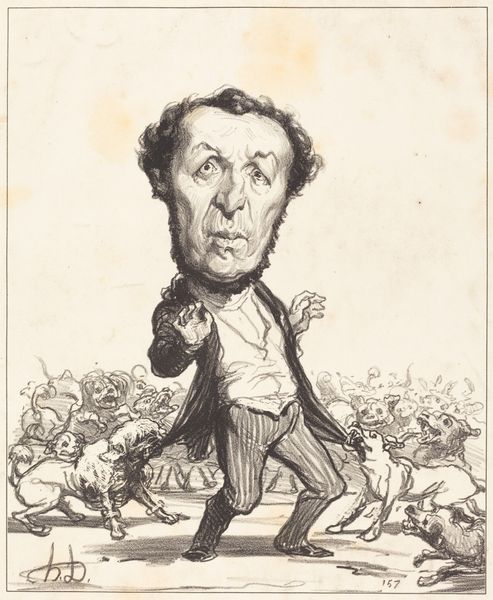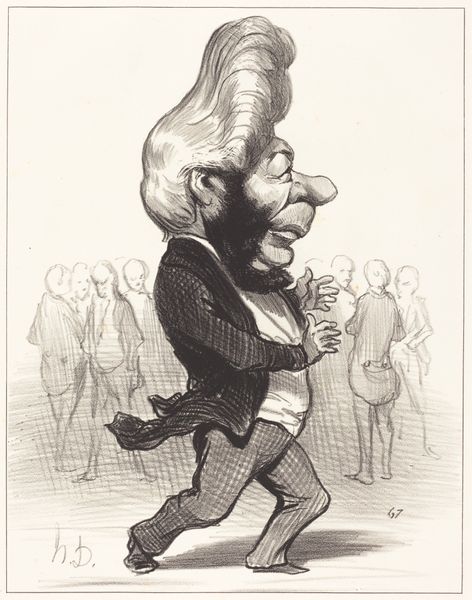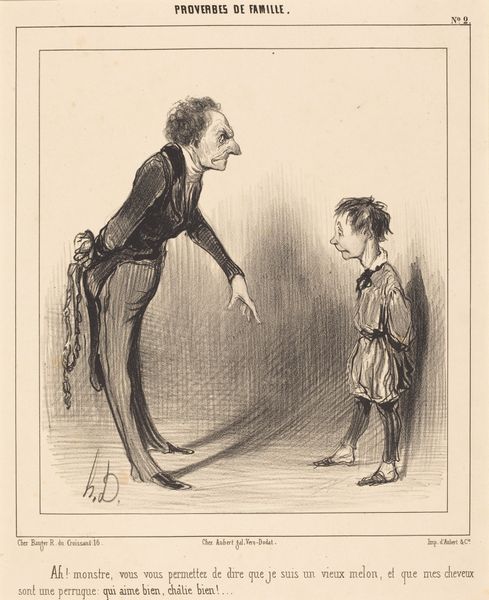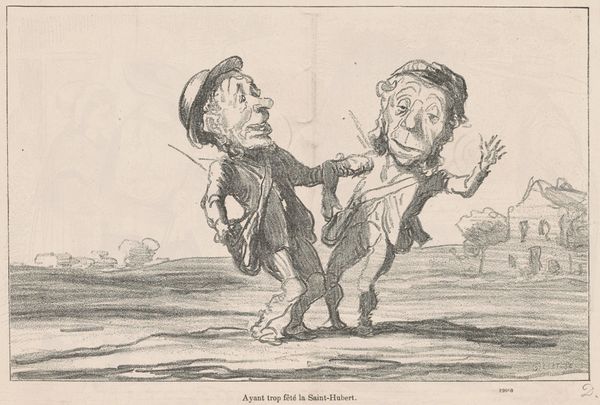
drawing, lithograph, print, pen
#
portrait
#
drawing
#
16_19th-century
#
lithograph
# print
#
caricature
#
pencil sketch
#
19th century
#
pen
#
portrait drawing
#
genre-painting
Copyright: National Gallery of Art: CC0 1.0
Editor: So, this is Honoré Daumier's lithograph, "J. Alexandre Bixio" from 1849. The figure seems oddly juxtaposed with the setting. It's a very character-driven portrait, with exaggerated features. How should we interpret it? Curator: Well, Daumier was known for his caricatures which frequently appeared in satirical publications. So understanding the socio-political landscape of France in 1849 is crucial here. The figure's features are certainly exaggerated to comment on the figure. Consider how his depiction relates to the political climate of the time, how are such exaggerated characteristics deployed within the socio-political commentary that underscores the caricature? Editor: You are saying that Daumier made an intentional effort to create art for political purposes? Curator: Absolutely! Lithography was a relatively new and accessible medium. Daumier used it to disseminate his critical observations of the bourgeoisie to a wider audience. What kind of figure do you perceive Bixio to be? Editor: From the title and the book beneath him, I see him to be someone in the political landscape - possibly of the literary persuasion - yet he is working as a gardener? Perhaps this relates to an ideal. Curator: Precisely. By portraying Bixio in such a manner, Daumier creates a narrative about power, labour, and the social expectations of the era, but also is very specific about a political and societal status and his potential decline. It's also about the politics of imagery: who is represented, how, and why? Editor: That's really helpful to understand the social implications behind this artwork and lithographs as a whole. I'm taking a deeper look into caricatures in a new light!
Comments
No comments
Be the first to comment and join the conversation on the ultimate creative platform.

